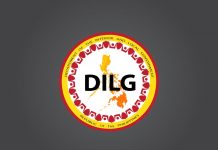Two days after Typhoon Ompong left the Philippine Area of Responsibility (PAR), the Department of the Interior and Local Government (DILG) lauded the Local Chief Executives (LCEs) and the Philippine National Police (PNP) for their timely action which saved 591,762 persons or 147,540 families in seven regions across the country.
DILG Officer-in-Charge Bernardo C. Florece, Jr. says that the pre-emptive evacuation, pre-positioning of supplies and equipment, and establishment of critical preparedness actions by the Local Government Units (LGUs) based on the Operation Listo protocols have significantly contributed to successful Typhoon Ompong operations.
“I commend our governors, mayors, and barangay captains for being on top of the Typhoon Ompong activities in their respective areas of jurisdictions which saved the lives of thousands of Filipinos, especially those who are living in vulnerable areas,” says Florece, who was designated as OIC while OIC-Secretary Eduardo M. Año is on official travel abroad.
Based on the September 17, 6AM Situational Report of the National Disaster Risk Reduction and Management Council (NDRRMC), Typhoon Ompong affected 2,738 barangays, 433 cities and municipalities, and 31 provinces across National Capital Region (NCR), Region I, Region II, Region III, CALABARZON, MIMAROPA, and Cordillera Administrative Region (CAR).
Of which, a total of 219,508 people or 57,196 families were served inside and outside the evacuation centers.
According to Florece, the Department activated its 24/7 Disaster Monitoring and Reporting Systems led by its Central Office Disaster Information Coordinating Center as early as September 11 or five days before Typhoon Ompong was expected to hit the country.
He says the Department also urged local chief executives to undertake the critical preparedness actions in Operation Listo: Alpha for low risk areas, Bravo for medium-risk areas, and Charlie for high-risk areas.
“The accountable, responsive, and foresighted actions of our LCEs as heads of their Local Disaster Risk Reduction and Management Councils (LDRRMCs) in this trying time manifested the true mark of public service,” he adds.
Continuous monitoring by PNP
Florece likewise commends the PNP for their round-the-clock monitoring to ensure continuous operations of communication system, repacking of family food packs at the Department of Social Welfare and Development (DSWD) field offices, and deployment of Search and Rescue (SAR) personnel across the Ompong-affected areas.
“Our police officers set aside their personal safety and braved the strong winds and rains just to fulfill their avowed duties and save the lives of our people,” he says.
Continue post-Ompong disaster operations
With Typhoon Ompong now out of PAR, DILG Assistant Secretary and Spokesperson Jonathan E. Malaya says LGUs should continue with the post- disaster activities such as relief pack distributions and mass feeding.
Considering that the LCEs know their localities best, he says governors, mayors, and barangay captains are in the best position to decide when to advice the evacuees to go back to their respective communities.
He also trusts the mayors’ decision on when to lift class and work suspensions, fishing, and travel bans.
Malaya says the PNP should likewise continue with the post-disaster activities such as conduct of patrols as well as search and rescue operations especially in landslide-affected areas of CAR.
He says the PNP should work closely with the other concerned national and local government agencies and private entities to fast track clearing operations and immediately restore power, water supply, and communication in affected areas.
“The path to rehabilitation is not easy especially for those areas under state of calamity but now that the worst is over, let us continue to work together so that our people and communities can go back to their normal lives,” says Malaya.
On-going verification and validation of casualties
DILG CODIX Chief, Edgar Allan B. Tabell says that the Management of the Dead and Missing (MDM) cluster of the NDRRMC led by DILG is still conducting verification and validation of the Typhoon Ompong casualties.
“The verification and validation processes are very important because of legal implications, as well as benefits that are due to the victim’s families,” Tabell says.
In the verification process, the PNP investigates the reported death, retrieves the dead body, and identifies the circumstances leading to the death, and releases an official police report on the matter.
In the validation process, the Local Health Office or Department of Health examines the dead body and determines if the cause of death is directly or indirectly related to the disaster, and releases an official report which indicates the cause of death.
“The government is taking care of search and retrieval and proper handling of the dead,” Tabell adds.
The official number of Typhoon Ompong casualties will be released only by the NDRRMC as soon as each dead body has gone through the proper process. —DILGCO



